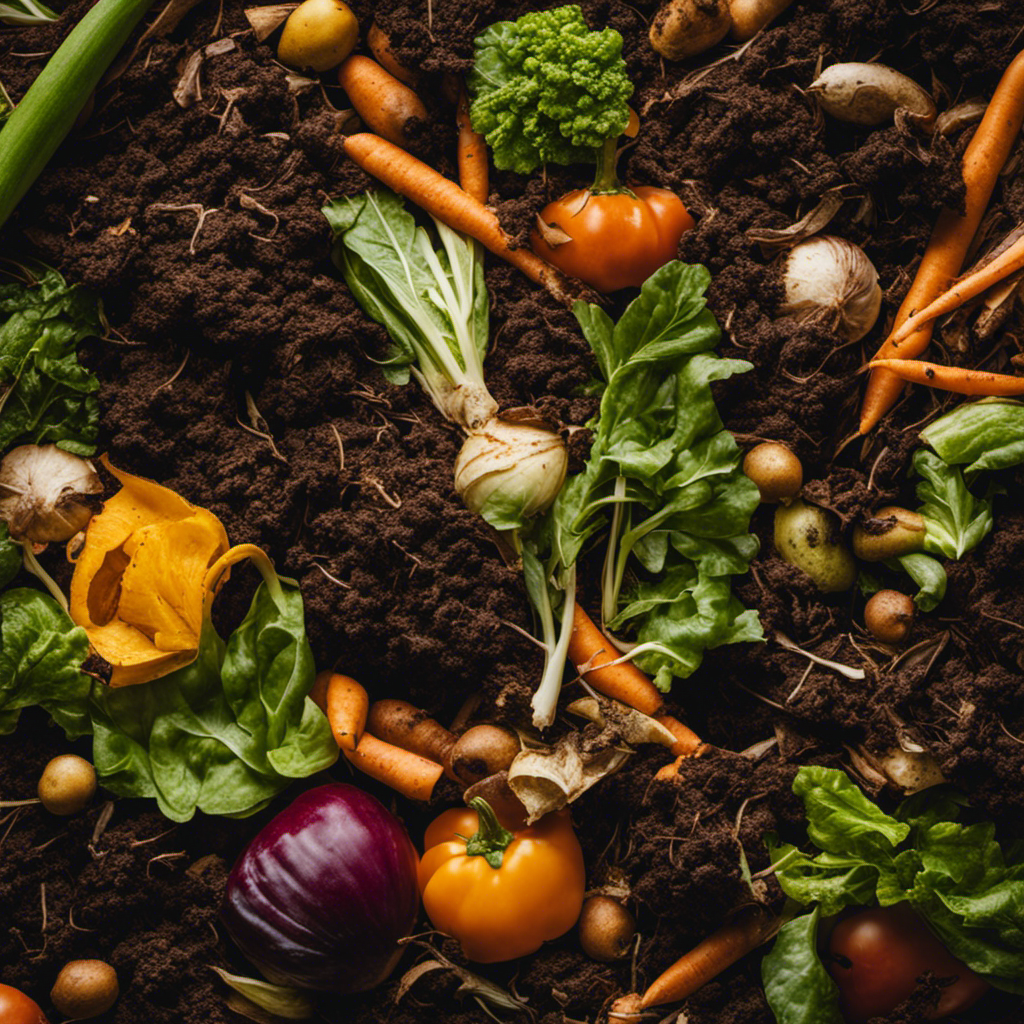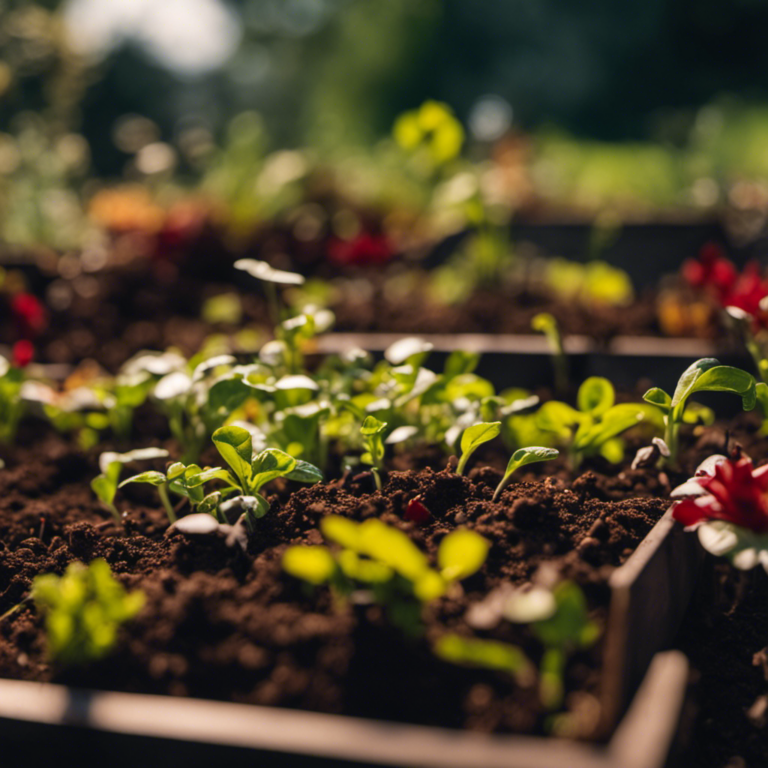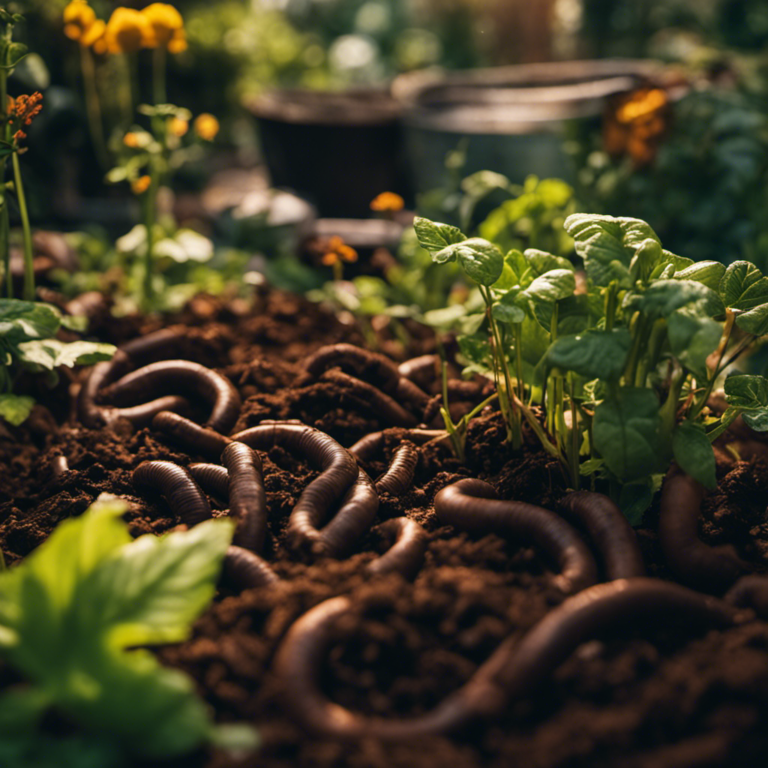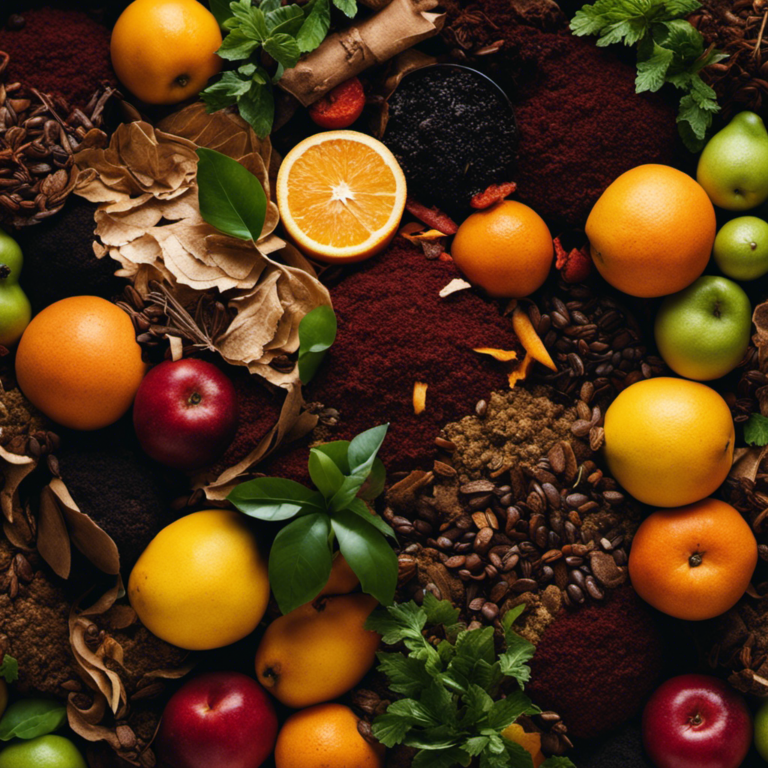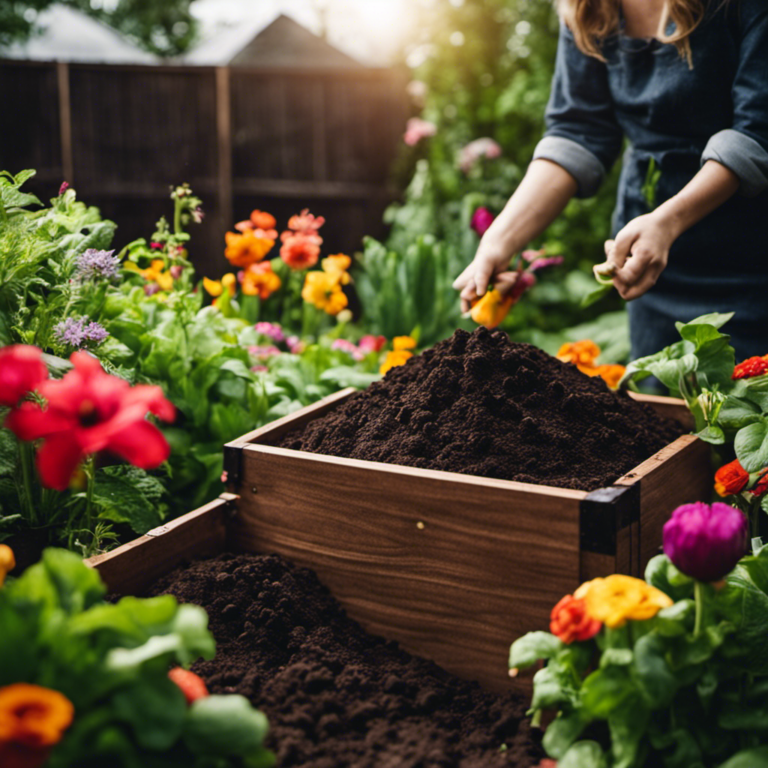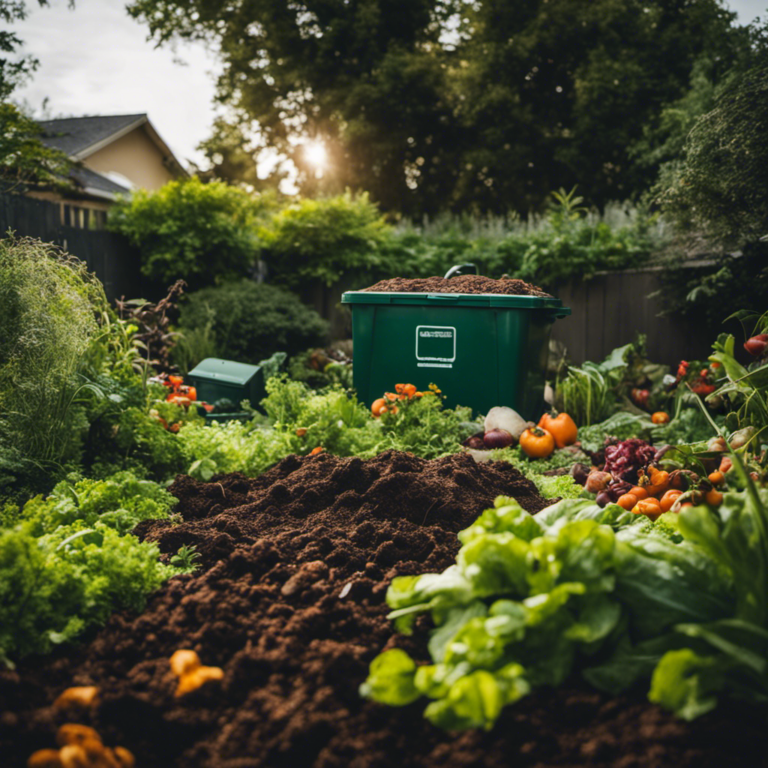As an avid organic gardener, my goal has always been to make my composting process as efficient as possible. It’s not just about reducing waste; it’s about providing my beloved veggies with nutrient-rich goodness.
In this article, I will share the techniques I’ve personally tested and found effective for achieving optimal composting results. I’ll guide you through every step, from selecting the right materials to maintaining the perfect balance of carbon and nitrogen.
So let’s get started and give our organic veggies the nourishment they deserve.
Key Takeaways
To maximize the efficiency of composting for organic veggies, it’s important to carefully consider the method you use, the materials you use, the balance of carbon and nitrogen, the techniques for aerating the compost, and monitoring the temperature. By properly balancing these factors, you can create nutrient-rich compost that will greatly benefit your organic vegetable garden. Paying attention to detail and following scientific principles are key to achieving the best results when it comes to composting. Additionally, it’s important to remember that the quality of your compost directly impacts the health and productivity of your organic vegetables. So, taking the time to compost properly is definitely worth the effort.
Determining the Right Composting Method
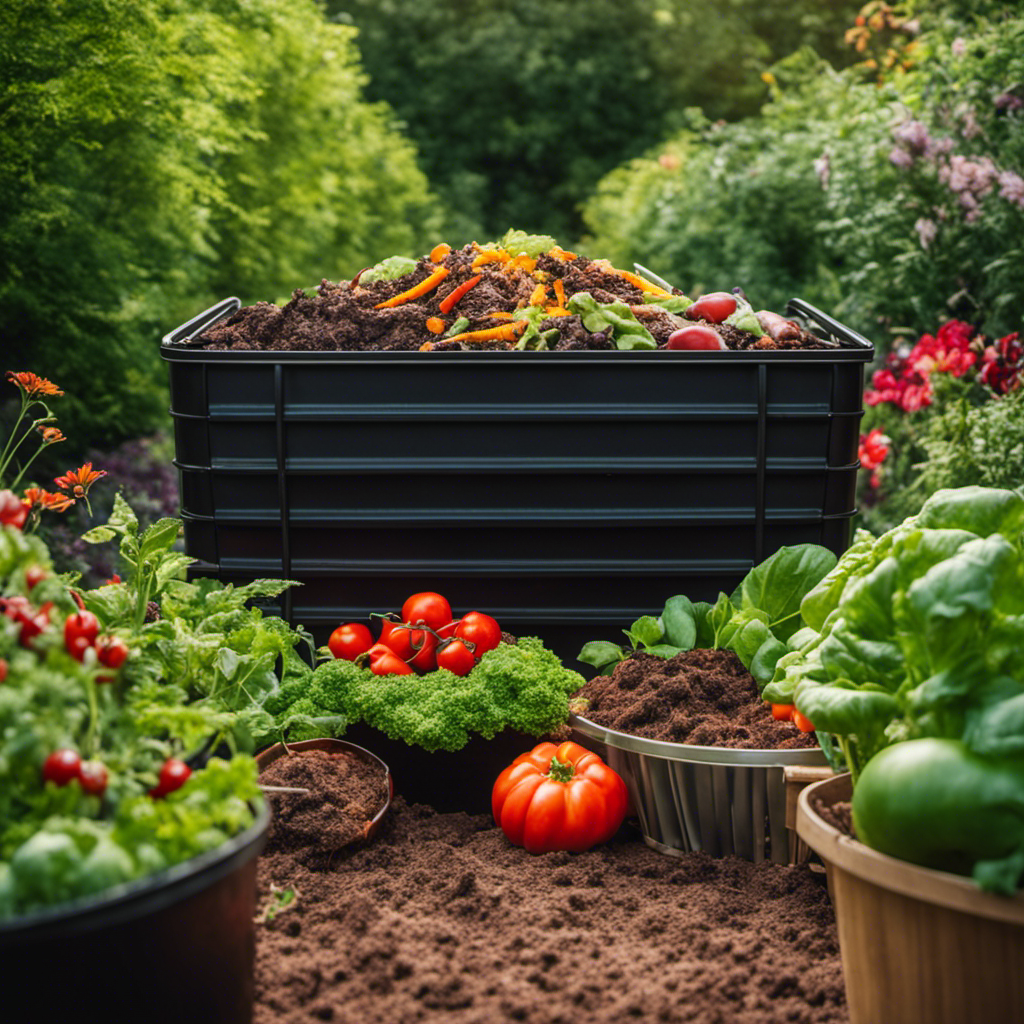
Determining the Right Composting Method
To find the best composting method for your organic vegetables, start by considering the available space and materials. Make sure you have enough room for your compost pile or bin, as well as the necessary ingredients. Depending on the size of your space, you can choose between a traditional compost pile or a compost bin. Additionally, the materials you have access to will influence your method selection.
Next, it’s important to understand the composting timeline. Composting is a natural process that takes time, usually ranging from a few months to a year. Patience is key, as you need to give your compost enough time to break down properly. If you encounter issues with your composting, such as a foul odor or slow decomposition, troubleshooting is necessary. Common problems may include an imbalance of green and brown materials, insufficient moisture, or inadequate aeration. By identifying these issues, you can make the necessary adjustments to get your compost back on track.
Selecting the Best Composting Materials
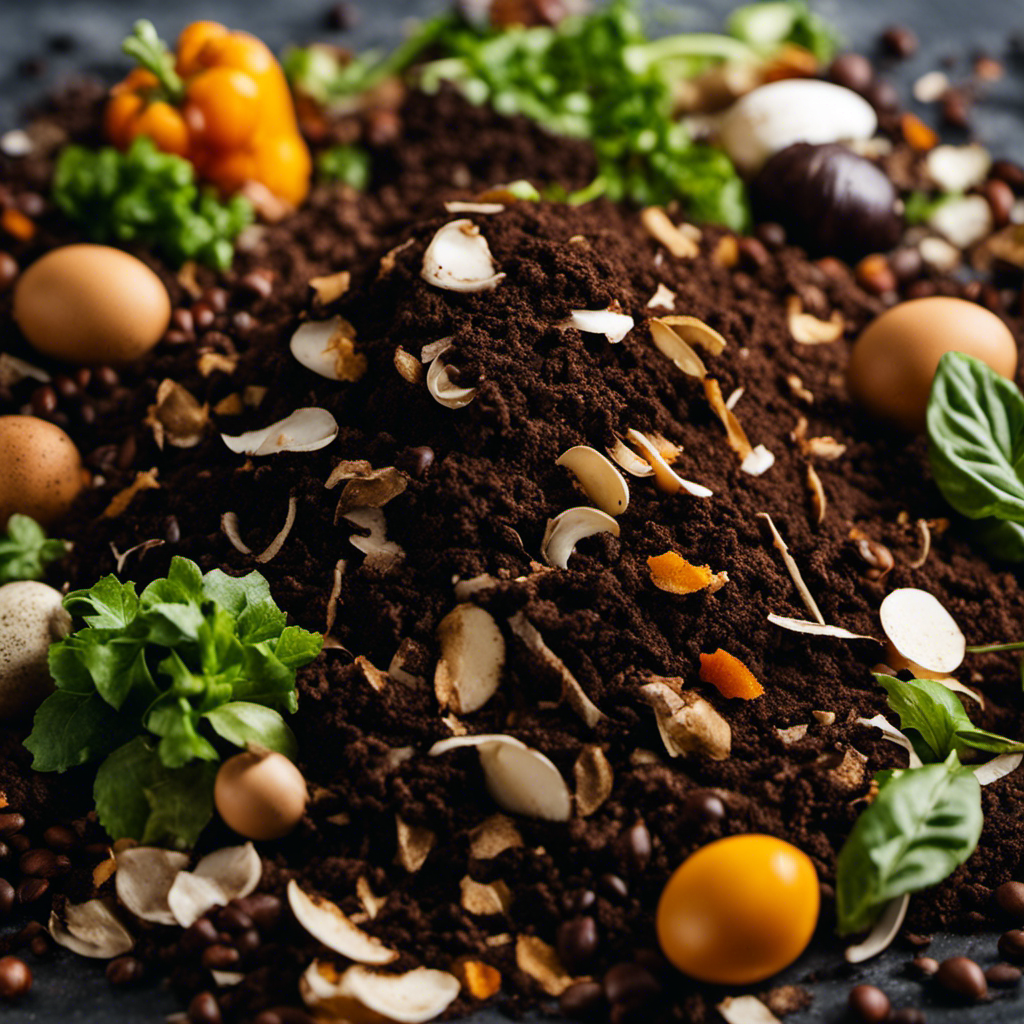
When choosing the best materials for efficient organic veggie composting, it’s important to prioritize a variety of nutrient-rich ingredients. Selecting appropriate composting materials is crucial for creating a balanced and fertile environment for decomposition.
Organic materials like fruit and vegetable scraps, coffee grounds, and yard waste are excellent choices as they provide essential nutrients such as nitrogen, phosphorus, and potassium, which are vital for healthy compost. However, it’s important to avoid using meat, dairy products, and oily materials as they can attract pests and slow down the composting process.
In addition to choosing the right materials, troubleshooting common composting issues is essential to maximize composting efficiency. If your compost pile is too dry, adding water to maintain a moisture level similar to a damp sponge is recommended. On the other hand, if your compost is too wet, incorporating dry materials like leaves or sawdust can increase aeration. Regularly turning the compost pile is crucial to ensure proper airflow and even decomposition. If you notice a foul odor in your compost, it may be due to an imbalance in the carbon-to-nitrogen ratio. Adding dry, carbon-rich materials like straw or shredded newspaper can help address this issue.
Balancing Carbon and Nitrogen Ratios
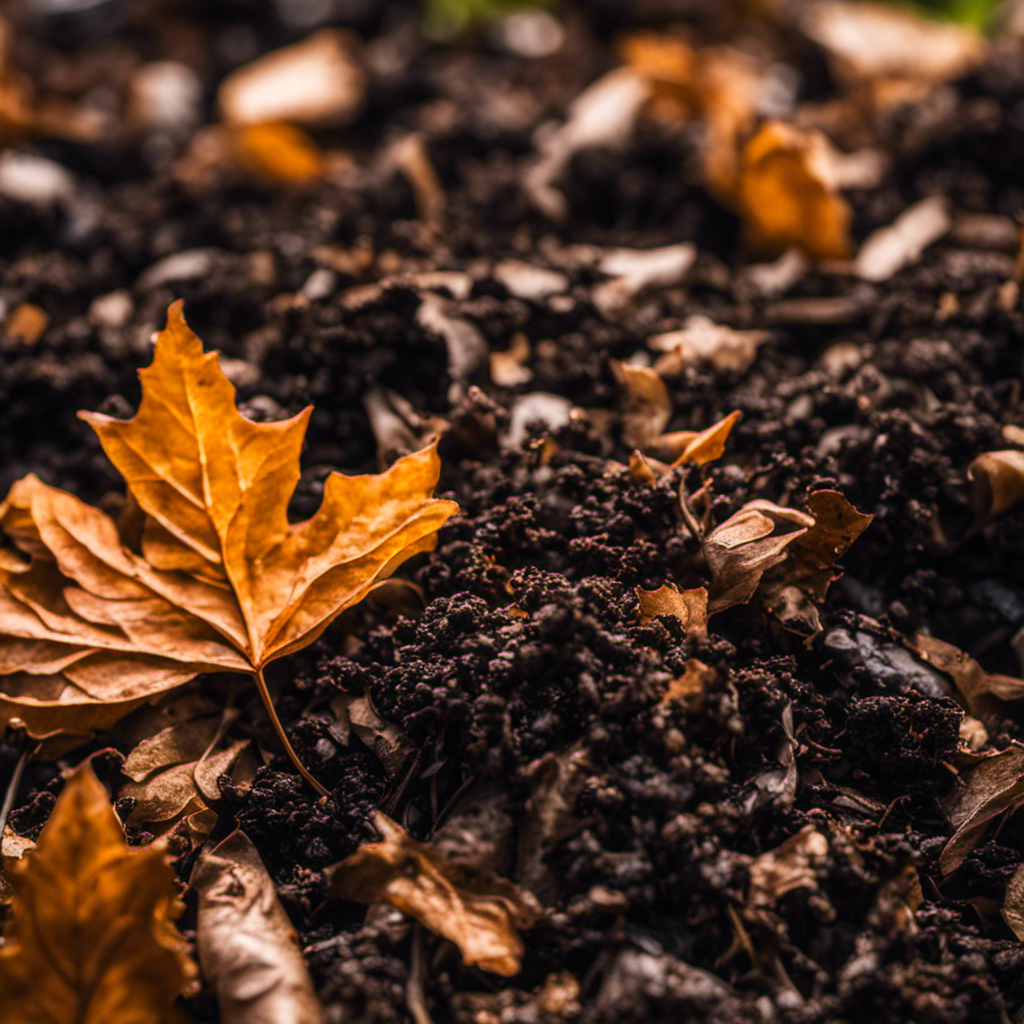
Balancing Carbon and Nitrogen Ratios for Optimal Composting Efficiency
To achieve the best results when composting organic veggies, it’s important to maintain a proper balance between carbon and nitrogen ratios. Carbon and nitrogen are the main components in composting materials, and finding the right ratio is crucial for a successful composting process.
The carbon-to-nitrogen ratio (C:N ratio) plays a significant role in the decomposition rate, nutrient availability, and overall quality of the compost. Ideally, a balanced C:N ratio is around 30:1, with 30 parts carbon to 1 part nitrogen.
Carbon-rich materials such as dry leaves, straw, and wood chips contribute to the carbon content, while nitrogen-rich materials like fresh grass clippings, kitchen scraps, and manure provide the necessary nitrogen. By combining these materials in the correct proportions, you can create an environment that supports efficient decomposition and nutrient release.
Maintaining the proper C:N ratio can be a challenge and requires careful monitoring and adjustment. If the composting process is too slow, it may indicate a high carbon content. In such cases, adding nitrogen-rich materials can help accelerate decomposition. Conversely, if the composting process is too fast or has an unpleasant odor, it may indicate an excess of nitrogen. Adding carbon-rich materials can help balance the ratio and address these issues.
Understanding the importance of balancing carbon and nitrogen ratios in composting allows you to troubleshoot any problems that may arise and maximize the benefits of compost for your organic veggies. Well-balanced compost not only enhances soil fertility, but also promotes robust plant growth and reduces the need for synthetic fertilizers.
Incorporating Aeration Techniques
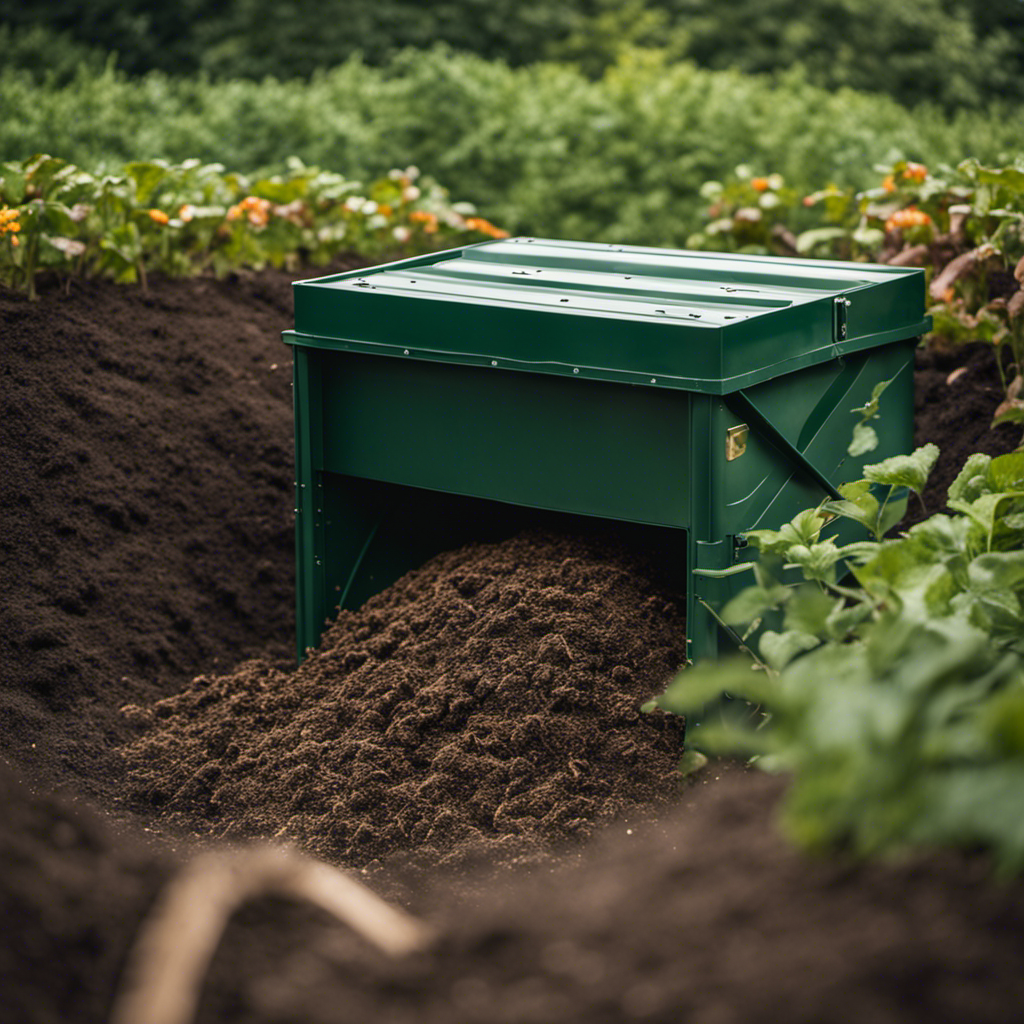
Incorporating Aeration Techniques
By using aeration techniques, we can greatly improve the efficiency of composting organic vegetables. Aeration, which involves introducing air into the compost pile, plays a crucial role in promoting decomposition and maintaining optimal conditions for microbial activity. This leads to faster breakdown of organic materials and the production of nutrient-rich compost that improves soil health.
One of the main benefits of aeration for soil health is avoiding anaerobic conditions. When organic matter decomposes without oxygen, it produces harmful byproducts like methane and hydrogen sulfide, which can hinder plant growth. By ensuring proper aeration, we can minimize the production of these harmful substances and create a more favorable environment for beneficial microorganisms.
Improving composting efficiency through oxygenation can be achieved using various techniques. One effective method is regularly turning the compost pile, which helps incorporate air and distribute moisture evenly. Another approach is using compost aerators or perforated pipes to introduce air deep into the pile. This allows for better circulation of oxygen and speeds up the decomposition process.
To demonstrate the benefits of aeration techniques, let’s consider the following table:
| Aeration Technique | Benefits |
|---|---|
| Regular turning | Enhances oxygen circulation |
| Compost aerators | Increases decomposition rate |
| Perforated pipes | Promotes even moisture distribution |
Monitoring and Maintaining Compost Temperature
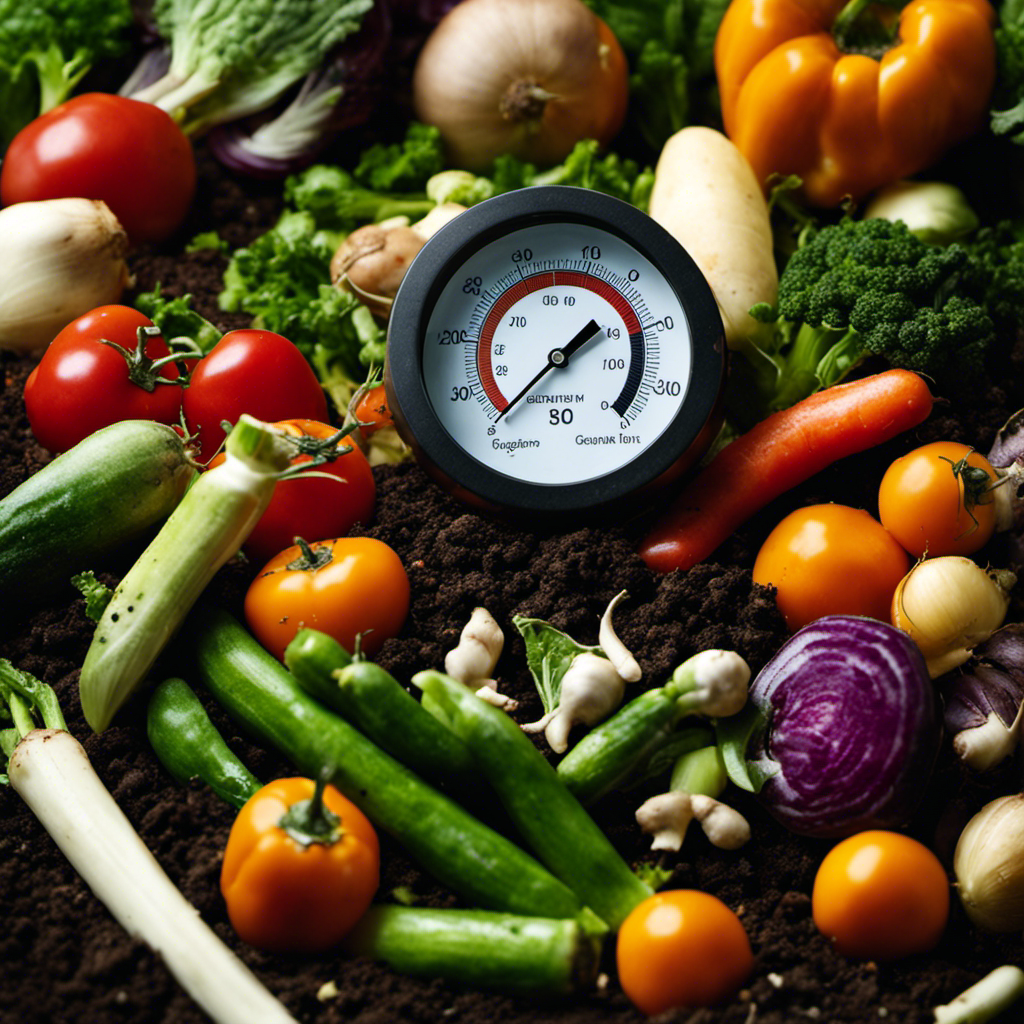
Monitoring and Maintaining Compost Temperature
To ensure efficient composting, it’s important to monitor and maintain the temperature of the compost pile. The temperature plays a crucial role in the decomposition process, as it affects the activity of microorganisms responsible for breaking down organic matter. By carefully monitoring the compost temperature, you can troubleshoot any fluctuations and ensure that the conditions remain ideal for decomposition.
One effective way to monitor the temperature is by using a compost thermometer. This tool allows you to accurately measure the internal temperature of the pile. Ideally, the compost temperature should be between 120°F and 160°F. If the temperature drops below 120°F, it indicates that the microorganisms aren’t active enough, which can slow down decomposition. On the other hand, temperatures above 160°F can harm beneficial microbes and result in nutrient loss.
To maintain the compost temperature, you can make adjustments based on the thermometer readings. If the pile is too cool, adding nitrogen-rich materials like fresh grass clippings or kitchen scraps can increase microbial activity. Conversely, if the temperature is too high, turning the pile or adding more dry carbon-rich materials like leaves or straw can help balance the moisture content.
In addition to monitoring temperature, it’s also important to pay attention to compost moisture levels. Optimal moisture levels for decomposition range between 40% and 60%. If the compost becomes too dry, adding water can increase moisture. On the other hand, if it becomes too wet, adding dry materials can help absorb excess moisture.
Conclusion
To maximize composting efficiency for organic veggies, it’s important to carefully consider the composting method, materials, carbon and nitrogen ratios, aeration techniques, and temperature monitoring.
Balancing these factors properly will result in nutrient-rich compost that will benefit your organic vegetable garden.
Paying attention to detail and following scientific principles are key to achieving optimal composting results.
Remember, the quality of your compost directly impacts the health and productivity of your organic vegetables.
